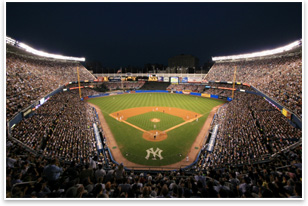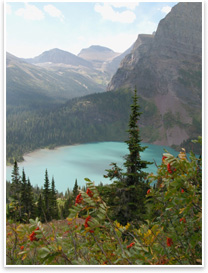Enrichment Program Gives Employees a Chance to Pursue Intellectual, Artistic Passions
HMC Architects offers travel grants for personal, professional development
by Tracy Ostroff
Contributing Editor
How do you . . . help employees feel fulfilled and build good will?
 Summary: California-based HMC Architects regularly offers its employees a chance to compete for scholarships for trips across the U.S. and overseas to pursue their intellectual and artistic passions. The journeys do not need to correlate directly with their jobs and may nourish interests outside of architecture. An HMC design director says the program’s benefits are exponential to the firm’s investment of money and time. Summary: California-based HMC Architects regularly offers its employees a chance to compete for scholarships for trips across the U.S. and overseas to pursue their intellectual and artistic passions. The journeys do not need to correlate directly with their jobs and may nourish interests outside of architecture. An HMC design director says the program’s benefits are exponential to the firm’s investment of money and time.
During times when companies across the board are going on economic diets, it’s not every day one hears of a firm putting more of its funds toward employee programs. But the leaders at HMC Architects don’t view the travel grant program in those terms. In fact, they see it as a modest investment with a big bang for the buck in terms of professional and personal development, education, and morale.
To qualify for the program, which the firm has branded as “HMC [x]ref,” employees write a proposal describing what they would like to do, where they would like to go on a personal enrichment trip, and how it would benefit them and their work. Their proposals are then reviewed by an independent panel of HMC clients who decide which two employees will get to go on company-sponsored personal enrichment trips each year. In the previous two years, the firm allotted $2,500 and $3,000 to each recipient, respectively. They will raise the amount to $4,000 this year to adjust for inflation. Winners also receive a paid week off, which they can combine with personal vacation time to extend their trip.
Past recipients include Senior Graphic Designer David Fennema, whose subsidized trip in 2007 took him to four sites in North America, where he pursued his passion for photography to capture images of things in architecture and nature that will soon be gone forever.
 “This is a program that motivates and energizes our staff,” says Kevin O’Brien, AIA, LEED-AP, the HMC principal and design director who brought the idea to the firm. “It also provides a way for our principals and shareholders to give something back to our employees.” O’Brien notes that the firm’s design leadership helped develop the program and presented it to Chief Executive Officer Randy Peterson, FAIA, LEED-AP, and to the rest of the shareholders, all of whom gave the proposal the green light. “This is a program that motivates and energizes our staff,” says Kevin O’Brien, AIA, LEED-AP, the HMC principal and design director who brought the idea to the firm. “It also provides a way for our principals and shareholders to give something back to our employees.” O’Brien notes that the firm’s design leadership helped develop the program and presented it to Chief Executive Officer Randy Peterson, FAIA, LEED-AP, and to the rest of the shareholders, all of whom gave the proposal the green light.
Creativity is paramount
“The program came at the right time. It expands the idea of the type of firm we want to be,” O’Brien enthuses about HMC. He notes that it is “not a top-down run company,” but an environment where ideas flourish from all corners of the offices. With a close-knit firm of nearly 500 people, that means fostering a general culture of creativity. “All experiences enrich their lives. It gives people a chance to lift their heads out of the trenches and become removed from the day-to-day workplace. You never know from where the next great idea is going to come.”
To that end, the principals and firm leadership made a conscious effort to remove themselves from the process. They cannot apply for the grants, nor do they judge the applications. They leave that to two panels of clients and project consultants, one in Northern California, and another in Southern California, to evaluate the presentations and pick two recipients. HMC sends the jury members a digital file of the entries in advance. They then meet over dinner and drinks to review the submissions, deliberate, and make their choices. HMC staff are “flies on the wall” during the process, O’Brien says.
O’Brien says the jury members take their responsibilities seriously and often become invested in their choices, finding out more about the staff member and his or her project and keeping tabs on their excursion.
 Where do they go? Where do they go?
“The hardest part is the brainstorming process,” Fennema says. “I had a vague idea. I just had to figure out a way to present it succinctly and clearly and to make it have a point.” Fennema, who travels regularly for his photography, wanted a variety of locales that had a common theme of “disappearing,” with architectural (the soon-to-be demolished Yankee Stadium), cultural (the mostly defunct Coney Island), and environmental (the receding Glacier National Park and the depleted Mexican rain forest) components. He says the experiences that he had show up in subtle ways in his work.
“I draw from my life’s experiences, and these trips gave me the chance to flex my artistic talents and delve into things that stimulate my creativity and passion for my craft.” Plus, he says: “It’s just such a fantastic, cool thing. People get really excited.” He says there is a buzz in the office now as people are readying their submissions for this year’s competition. If they are not selected, he says, people are encouraged to refine their ideas and apply again.
Really, in this economy?
O’Brien sees it as a self-serving gesture on the part of his company to offer this benefit to employees. He says, “You have to realize that the investment is pretty small in relationship to the larger gain.” The return on investment is that they bring their experiences, enthusiasm, motivation, and new-found knowledge back to HMC to share with colleagues. In Fennema’s case, he created a Web site to share the images he captured. There is also a video presentation on the firm’s intranet site.
O’Brien also says the program can be replicated on a smaller scale. “Maybe it’s not an international trek, but something more local,” he suggests. And even at HMC, “given the wide-open possibilities and the broad scope of the HMC [x]ref program, people choose to go to a place in the U.S. or locally to explore it more in depth. Distance is not necessarily the issue.”
|


 Summary:
Summary:
 Where do they go?
Where do they go?